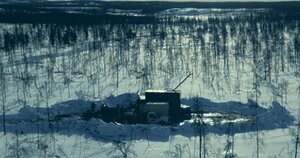Richard Kang: Clearly, the emerging markets theme is very hot right now, especially for those investors who have traditionally focused on the U.S. and developed world. Many investment vehicles focused on developed markets offer little yield. Returns are as volatile as they could be anywhere; for example, the S&P 500 has gone down 50% twice in the last 10 years—once when the dot.com bubble burst and the other because of the global financial crisis in 2008. All markets are related to one another. Whether you go to Japan or Europe, what's the benefit? So for many reasons emerging markets are hot. The problem with emerging markets is the practicality of investing—they're often non-transparent and illiquid. You can't short them even if you want to. Sometimes they're hard to access, like India for example, and they're expensive to access when you consider trading costs, fund fees and other considerations. For these reasons and others, ETFs have become the weapon of choice.
TER: Please explain the term "weapon of choice" in that context.
RK: Investors seeking higher returns would like to have some kind of active component in emerging or frontier markets but they believe that this category is relatively inefficient, as opposed to U.S. equity markets, which are relatively efficient. Thousands of analysts study Coca-Cola or General Motors, so those prices are pretty much where they should be. There are far fewer analysts in emerging markets but investors want to access those markets and think there's a great opportunity to churn out some added return by taking an active management approach. But stock picking is difficult for maybe 90% of investors who don't spend time in India or China. That's where an ETF makes sense. It's an underlying passive strategy with an index, but it's also a tool to actively manage one's risk exposure. India versus China, energy versus industrials or utilities—those are active decisions. For many investors, an ETF is their weapon of choice for that—plus the pragmatic aspects of ETFs that deal with the issues of cost, diversification, liquidity, transparency, shorting, etc. mentioned earlier.
TER: Why not an emerging markets mutual fund?
RK: A mutual fund company would tell you: "Please don't trade our fund because it hurts us. Administratively, it adds costs to us and to you, the investor." Not just that but the regulators have said the same thing. The market timing of mutual funds was a scandal several years back. In any case, everybody's saying "Don't do it. You should buy and hold the mutual fund," and rightly so in both cases. An ETF provider, like us, says: "Please trade these. They're supposed to be traded; that's why we build them and place them on the New York Stock Exchange." Investors around the world go to the NYSE for one reason only—liquidity. If I go to a billionaire in Dubai and say, "I can build this fund for you on the Dubai Exchange," they'll say, "Please don't do that. We have U.S. dollars and we need the liquidity of the New York Stock Exchange." That's why investors go there. Further, with more volatile asset categories like emerging market equities, many investors would rather shorten their holding period. That's the reason ETFs are traded, not simply just bought and held.
TER: Of particular interest to us are your energy and mining ETFs: EG Shares Dow Jones Emerging Markets Energy Titans Index Fund (NYSE:EEO)) and EG Shares Dow Jones Emerging Markets Metals & Mining Index Fund (NYSE:EMT). Why did you choose passive ETFs versus actively managed ETFs?
RK: The ETF industry, which started in the early 1990s, was built out of underlying index or passive strategies. Today, I would say close to 99.99% of ETF assets around the world employ passive strategies. I'd be surprised if it was even 0.01% in active strategies, in terms of total global ETF assets. Then, we look at the very large funds. They are the most vanilla of passive strategies like the SPDR S&P 500 ETF (NYSE:SPY), which tracks the S&P 500. For us, a passive strategy was pretty much a no brainer. We were coming out of the worst financial crisis since The Great Depression when we launched these funds. If we were going to put a product out there, it had better be something that we believe is palatable to most investors. Investors want the liquidity they can't find in emerging markets. We knew we had to provide that with a portfolio of, let's say, 30 stocks. A concern was that if we tried for a more diversified portfolio of 100 energy or mining stocks maybe those in the bottom quarter or even half might not be that liquid. The 2008 financial crisis was one of liquidity as much as anything else was, so we needed to ensure that we were pretty basic in what we did.
TER: Your first ETFs focused on specific sectors within emerging markets versus a range of sectors. What specific sectors are you focusing on now?
RK: When we first launched our company, we started with the energy fund and the metals and mining fund. We felt the commodity play was strong coming out of the bottoms of March 2009; but we were not certain how strong the recovery was going to be. Clearly, the recovery wasn't that strong; therefore, it has taken a while for oil and other commodity prices to come back.
Our latest fund focuses on emerging market consumers, another sector that we're big on. In September 2010, we launched our EG Shares Dow Jones Emerging Markets Financials Titans Fund (NYSE:EFN). So, we have various sectors that we're bullish on; but to diversify our product lineup, we also moved to more thematic funds focused on country-specific infrastructure (specifically infrastructure funds focused on China, Brazil and India, respectively). We also have a small-cap India fund, EG Shares INDXX India Small Cap Index Fund (NYSE:SCIN), which focuses on India consumers. But we are still very keen on the idea of a sector approach to emerging markets—not just a country approach.
TER: How often are the Dow Jones indexes updated, in terms of holdings?
RK: For the Dow Jones indexes and the sector funds that track them, the names are rebalanced once a year in June. But we rebalance the weights quarterly. Now those rules aren't necessarily firm. Some rules are imposed on top of them; for example, a company could be reclassified to a new sector based on how its revenues are derived, as an emerging market from developed market or a list of other possibilities.
TER: Most of the companies that your energy ETF is tracking are large oil companies with some gas exposure. You don't have any control over what you're investing in, per se. How do you determine how you set up these ETFs?
RK: Good question, and there are several answers. First, we are not the active investor. We provide the ETF as a tool for active investors. That's a very important concept with the ETF space. You won't find any ETF provider saying they're bullish on the S&P 500 or we have a short view on oil or long view on gold. It's not what we do; we provide the tool so investors can make that call.
In the case of this energy fund, it's clear. We find these companies in emerging markets, not developed markets. When we consider the index from Dow Jones, it's Dow Jones' index but we have to be mindful that there are certain portfolio management rules that regulators impose for diversification or tax purposes. So we might have to work with them to bend the index construction rules a bit; for example, let's say we built an oil fund and it was 80% Russia. Frankly, it wouldn't be easy to justify because investors would say, "I should just buy a Russia fund." And that has happened before. In Canada at one point Nortel was two-thirds of the index. People said, "I think we should cap this index," and that's exactly what they did. That's a very good example of what many index providers do for ETFs. They say we have to cap certain things so you don't have too much weight in a particular sub-industry or country.
TER: Are you saying that forming these indexes with Dow Jones is a collaborative approach?
RK: Not in the past but today, especially with more niche indices, it is. In essence, it prebuilt these indexes; they are kind of off the shelf. There is always this push and pull between the index provider and the ETF provider. At the end of the day, the ETF provider is going to build a fund that tracks this index; but, frankly, its success is dependent on the ability to justify the fund. You can always sell the fund if it makes sense in portfolio management terms.
If it's too overweighted in a particular country or subsector, investors are going to think that's not good. Let's say, for example, we came out with a consumer fund that consisted of a bunch of emerging market car companies. As much as that may be the case based on the rules, it would not be very diversified. You want something else to diversify the fund—not just durables. So when you talk with an index provider, you have to have that discussion beforehand. Afterward, you cannot change the index so simply. It's very hard to tell investors, "Oh, we're going to change the rules."
TER: What about the allocations between large companies and highly prospective small companies? How do you ensure some of those small companies with significant growth prospects get in the indexes?
RK: That's a very good question. For us, our sector fund has an underlying index of 30 names regardless if it's the energy, financials or metals fund. Why do we do that? Because we want to make sure we're providing investors access to the most liquid names. They are, by definition, the largest names but large often means more liquidity. If I said I'm building a gadget fund that contained Apple, RIM and Nokia, there would be no fear of buying or selling shares. If I really wanted to dump these names, or dump this ETF, it wouldn't be a problem because there's going to be liquidity to sell these. Now, let's say I built a speculative gadget fund with unknown providers in Taiwan or Korea. You might not be able to get out of that fund because if you're selling, others may also be selling out of these relatively smaller names. That's a real problem. We have the top 30 names by size and assured liquidity so, if investors needed to, they could get out.
TER: How is Dow Jones determining that?
RK: It's pretty standard regardless of the index provider. Any index provider looks at not only market cap or free float-adjusted market cap to see what's available based on size, but there are also various metrics used to determine the availability of shares if you have to buy or sell. For example, average daily trading volume is a very basic one. You can look at the previous 30 days or previous 3 months and say, on average, how many shares were trading at that point in time or on a particular day?
TER: Why do you believe in investing in emerging markets by sector versus taking a country-by-country approach?
RK: We don't have analysts picking one stock over the other. We don't make those calls, but others do. We believe, for example, many who make a call in the emerging markets will have a bearish or bullish view on India versus China. But others have more of a sector view. Most investment banks or research houses are divided by sectors, like airline analysts or retail analysts. I don't think you will find a Canada analyst or a Mexico analyst as easily.
Let's look at the Russian market. Many investors think Russia is all about oil, but that's not necessarily the case. If you're buying a Russia fund, you're buying less than 50% oil. You're also buying metals, consumers and industrials. You're buying other things but you're also putting all your eggs in one basket in terms of Vladimir Putin and the political risk in Russia. So, if you're in Russia due to your willingness to accept energy-related risk, perhaps you might be interested in our emerging markets energy fund. It's heavily exposed to Russia. As of September 30, 2010, it was roughly 29% Russia; but it also has names from China, Thailand, India, Brazil, South Africa and others to make it a little more diversified than if it were all in Russia.
TER: Most of the large holdings in this fund are in the so-called BRIC countries: Brazil, Russia, India and China. You just talked about Russia and Russian oil titan OAO LUKOIL Oil Company (OTCPK:LUKOF) is a large holding. What are some others?
RK: Let me first state that the most common method used in indexing many sector funds is based on market capitalization. In other words, the larger the company, the greater proportional weight you'll have in the index the fund is tracking. It's just the nature of the beast. As of today, the BRIC nations have the larger companies. You won't find the larger emerging market names coming out of Poland or Indonesia; they're coming from these four nations.
One is Reliance Industries Limited (BSE:RIL; LSE:RIGD), which is a very big position in our fund and a gigantic play in India. India is where you're going to find a lot of future growth, so much growth the country has high inflation and it's been ratcheting up interest rates there despite having a hot stock market during this recent period of monetary tightening. The investment thesis is that the Indian consumer and public sector will need massive amounts of energy for infrastructure and consumerism. It's the same story in Brazil. Petrobras (NYSE:PBR) was associated with the largest IPO in history this year due to the fact that investors understand there's this big deepwater oil find off the coast of Brazil that Petrobras needs to access.
The theme is very common. Huge multinationals like Exxon Mobil Corp. (NYSE:XOM) and Chevron Corporation (NYSE:CVX) are going to the emerging markets to get hard-to-access oil. It can't all be in safe countries, such as Canada with its oil sands. That's why the emerging market energy fund is significantly focused on oil in emerging markets because they have the supply, and the demand is kind of a no-brainer.
Another one of our holdings is China's China National Offshore Oil Corp. (HK:883), also called CNOOC, which trades in Hong Kong—a very liquid market. Gazprom (LSE:OGZD; Fkft:GAZ; RTS/MICEX:GAZP; OTC:OGZPY), PetroChina Company Ltd. (NYSE:PTR; HK:857)—these are all huge names; we're talking Exxon kind of names. What's important to understand is that you can get out as long as the portfolio manager of the ETF is able to sell the underlying shares. That means each one of the underlying positions in the fund must be super liquid. That's the reason that we have 30 names.
TER: The EG Shares Dow Jones Emerging Markets Energy ETF has averaged just under 20% since it launched in May 2009. Year to date it's at 14.1%. Are those kinds of returns enough to keep your investors happy?
RK: That question is very appropriate for mutual fund investors because they buy and hold. But only some ETF investors buy and hold because they like the cheap cost of ETFs. Some are very short term because they like the liquidity and the ease of trading. And nobody is telling them not to trade ETFs.
For those ETF investors who are long-term oriented, I'm hoping that they're ok with those returns. It's been a tough market. Oil hasn't gone up to $100 a barrel, which I think many would've guessed after such a bad recession. What concerns us most is the short-term investor; have they been able to pick up those strong bull markets and avoid any strong corrections? Have we done our job in terms of tracking the underlying index? I think that's how we best keep our investors happy.
TER: During your time as a blogger under the banner Beta Brief in 2008, you talked about ETFs being the next wave. What's next for ETFs and those sorts of beta instruments? Please give us some parting thoughts on where you see the market heading.
RK: The ETF industry is growing. It's been around since the early 1990s, but so much of the money in the industry is concentrated in very vanilla names that are liquid—very cheap but also very well understood. One exception is the SPDR Gold Trust (ETF) (NYSE:GLD), which is universally known but not a typical stock index as it tracks gold bullion prices.
I think the evolution of the ETF industry will continue with greater understanding that some of these markets are relatively exotic but that the liquidity is still there. As long as I can buy or sell the underlying positions easily, we're all good in terms of liquidity.
Now the question is: What other markets are investors going to be looking for in the future? I think they're going to look for greater returns out of a frontier market. They'll look at how they can replicate something like a hedge fund; and they'll start looking at these new, actively managed ETFs that try to mimic a mutual fund. Can those be as liquid as the vanilla strategies out there in the indexing space? I think this is the future evolution of the ETF space and we'll see if that causes investors to dump their mutual funds in even greater amounts than they have in past years. If they move over to the ETF space, will they then want to move a little bit beyond indexing to something that is more like a mutual fund, which is a little bit of active management? I'm guessing that might be the case but we haven't seen it yet. We'll see.
Richard Kang has served as Emerging Global Advisors' CIO and director of research since September 2008. He began his career in 1995 at Guardian Timing Services, a Toronto-based hedge fund. In 2001, Richard was hired to build and manage the investment management subsidiary for Affinity Financial Group, a private wealth management firm. In late 2002, Richard cofounded Meridian Global Investors, an investment counseling firm managing globally diversified portfolios that include both traditional and alternative asset classes primarily through the use of passive instruments. By the summer of 2003, Richard was retained by a Toronto-based startup fund of hedge funds, Quadrexx Asset Management, for two years to oversee its operations as CIO. Richard consulted for various asset allocators as well as fund managers in the areas of hedge funds and ETFs at the end of 2006. From fall 2007 to fall 2008, he helped start up and was the first CIO of ETFx Indexes LLC, a boutique index provider focused on alternative investments.
A frequent speaker on a broad array of topics ranging from instrument types (ETFs, hedge funds and derivatives), portfolio management, as well as risk measurement/management, Richard has been quoted in a number of publications including The Wall Street Journal, Reuters, Investor's Business Daily, SmartMoney, CBS MarketWatch and BusinessWeek. In addition to business television appearances and writing articles for various industry publications and journals, Richard has served as a chairman, moderator, panelist and advisory board member at numerous industry conferences in the U.S., Canada and Europe, as well as more recently in the Mideast and Far East Asian regions. Richard C. Kang is a registered representative of ALPS Distributors, Inc.
Want to read more exclusive Energy Report interviews like this? Sign up for our free e-newsletter, and you'll learn when new articles have been published. To see a list of recent interviews with industry analysts and commentators, visit our Expert Insights page.
DISCLOSURE:
1) Brian Sylvester of The Energy Report conducted this interview. He personally and/or his family own shares of the following companies mentioned in this interview: None.
2) The following companies mentioned in the interview are sponsors of The Energy Report: None.
3) Richard Kang: From time to time, Streetwise Reports LLC and its directors, officers, employees or members of their families, as well as persons interviewed for articles on the site, may have a long or short position in securities mentioned and may make purchases and/or sales of those securities in the open market or otherwise.
Streetwise Reports LLC does not guarantee the accuracy or thoroughness of the information reported.E39MHFZV3EN2








































